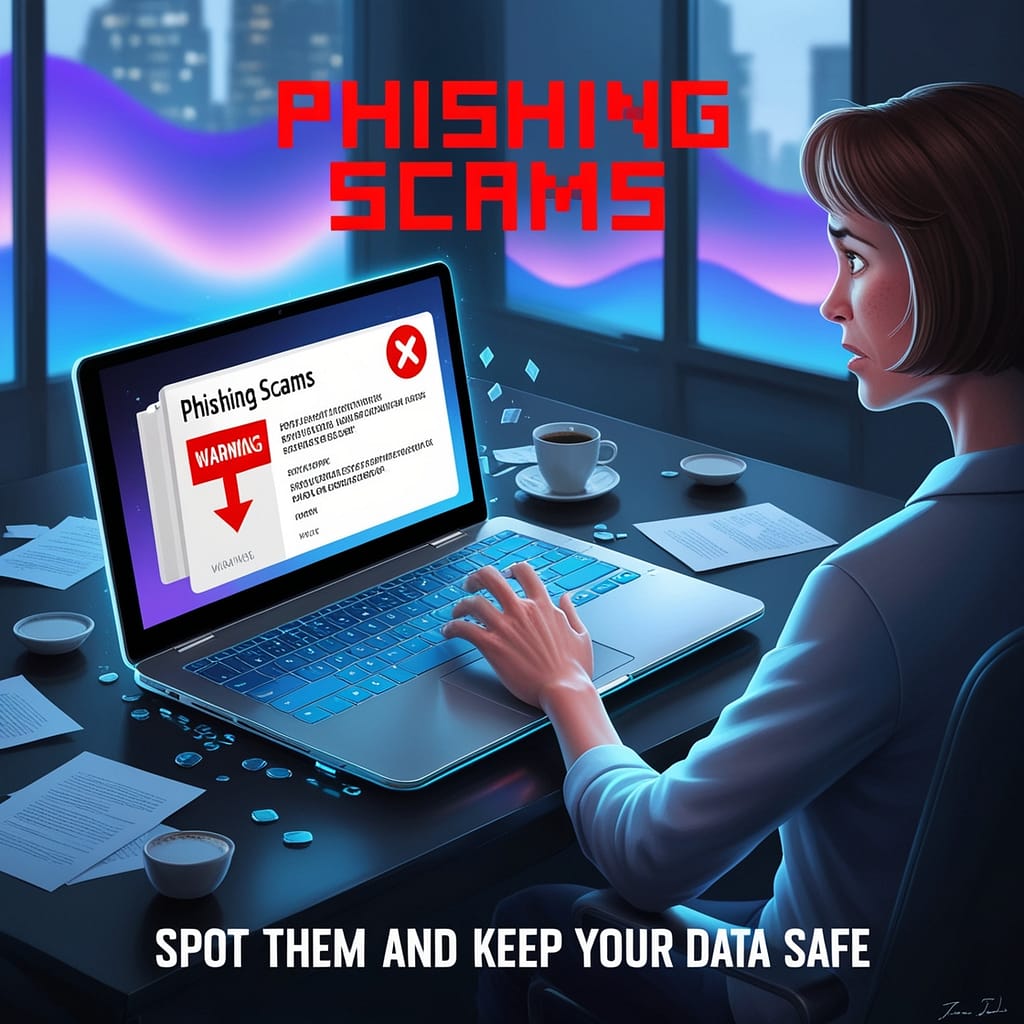In an increasingly digital world, phishing scams have become one of the most common and effective methods employed by cybercriminals to steal personal information. Phishing attacks are designed to deceive individuals into providing sensitive data such as passwords, credit card numbers, or social security information, leaving them vulnerable to identity theft and financial loss. In this article, we will explore how to spot phishing scams and offer practical tips to keep your data safe.
What Is Phishing? 🎣
Phishing is a fraudulent scheme where attackers impersonate legitimate organizations or individuals in order to trick victims into revealing confidential information. These scams can take many forms, including emails, text messages (smishing), voice calls (vishing), or even social media messages.
The most common phishing attacks involve:
- Email Phishing: Attackers send emails that appear to be from trusted sources, such as banks, government agencies, or well-known companies, requesting personal information or prompting the recipient to click on a malicious link.
- Spear Phishing: This targeted approach is aimed at specific individuals or organizations, often using personal information to make the scam more convincing.
- Whaling: A form of spear phishing that targets high-profile individuals such as executives or critical employees within an organization.
Recognizing Phishing Scams: Key Red Flags 🚩
Identifying phishing scams can be challenging, but there are several key indicators to watch for:
- Unusual Sender Address: Check the sender’s email address carefully. Phishing emails often come from addresses that resemble legitimate ones but may contain slight misspellings or domain changes.
- Generic Greetings: Phishing messages often use generic greetings like “Dear Customer” instead of addressing you by name. Legitimate companies typically personalize their communications.
- Urgent Language: Phishing emails often create a sense of urgency, suggesting that immediate action is required to avoid negative consequences. Be wary of messages that pressure you to act quickly.
- Suspicious Links:
- Hover over links without clicking to see the actual URL. If it leads to an unfamiliar or misspelled domain, it could be a phishing attempt.
- Look for shortened URLs, which may mask the actual destination.
- Unexpected Attachments: Be cautious of unsolicited emails with attachments, especially if you weren’t expecting any documents. These attachments may contained malware designed to compromise your system.
- Poor Grammar and Spelling: Many phishing attempts originate from non-native speakers, resulting in awkward language or numerous spelling errors.
Keeping Your Data Safe: Best Practices 🔒
Preventing phishing attacks requires vigilance and proactive measures. Here are some best practices to help protect your data:
- Educate Yourself and Your Team: Regularly educate yourself, your employees, and family members about the latest phishing techniques and red flags. Awareness is one of the most effective defenses against phishing.
- Verify Communications: If you receive a suspicious email or message, verify it by directly contacting the organization using official contact information. Do not use contact details provided in the suspicious message.
- Use Two-Factor Authentication (2FA): Enable 2FA on your accounts wherever possible. This adds an extra layer of security, requiring a second form of verification beyond just a password.
- Install Security Software: Use reputable antivirus and anti-malware software with features that can help detect phishing attempts. Ensure that this software is kept up to date.
- Keep Systems Updated: Regularly update your operating system, browsers, and applications to patch vulnerabilities that cybercriminals may exploit.
- Be Cautious with Personal Information: Limit the amount of personal information you share online. Be particularly cautious about sharing sensitive details on social media platforms.
- Report Phishing Attempts: If you encounter a phishing attempt, report it to the appropriate authorities, such as the Federal Trade Commission (FTC) or your organization’s IT department, to help prevent others from falling victim.
Conclusion: Stay Vigilant and Safe Online 🌐
Phishing scams continue to evolve, becoming more sophisticated and harder to detect. However, by staying informed and adopting proactive measures, you can significantly reduce the risk of falling victim to these attacks. Always approach unsolicited communications with caution, verify the identity of the sender, and never provide personal information without ensuring it is secure.
In the digital age, safeguarding your data requires vigilance, education, and a commitment to best practices. By implementing these strategies, you can enjoy a safer online experience and protect yourself from the relentless threat of phishing scams. Stay alert, stay safe! ✨



